Mammals of the Southern ConeArgentina, Chile, Paraguay, Uruguay
$28.16
Autor/a
En stock
$28.16
Peso
0.34 kg
Dimensiones
14 × 22.8 cm
Idioma
Inglés
Formato
Rústica
Páginas
160
Fecha de publicación
enero 2020
Publicado por
Lynx Edicions
Autor/a
Descargar la Lista de los Mamíferos del Cono Sur en formato PDF, donde verás en cuál de los cuatro países abarcados (Argentina, Chile, Paraguay y Uruguay) se encuentran las especies. También indica el estado de presencia (autóctona, hipotética, posiblemente extinguida, introducida o domesticada) y el estado de conservación de la Lista Roja de la UICN de cada especie.
Descripción
Esta lista ilustrada abarca el Cono Sur de Sudamérica y sus islas asociadas (las islas argentinas y chilenas de la Zona Austral, las Malvinas, las islas Desventuradas y el archipiélago de Juan Fernández), una región rica en diversidad de hábitats y que alberga una riqueza correspondiente de mamíferos. Aunque no es una Guía de Campo tradicional, este libro dotará tanto a los residentes como a los visitantes de la región de un recurso fácil de usar para conocer rápidamente todas las especies de mamíferos que se sabe que ocupan la zona.
Abarca 486 especies de mamíferos, incluidas 17 especies introducidas con poblaciones salvajes establecidas (castor americano, visón americano, antílope negro, mono ardilla de casco negro, rata parda, chital, gamo común, rata almizclera común, cerdo salvaje euroasiático, liebre europea, conejo europeo, ratón casero, muflón, rata del Pacífico, ardilla de Pallas, rata de tejado y ciervo rojo occidental) y tres domesticadas (alpaca, llama y búfalo de agua). Cada especie está ilustrada, y cada una va acompañada de un mapa de distribución que muestra dónde se da en la zona. En cuanto a las especies domesticadas, la Alpaca y la Llama tienen un tratamiento completo por su importancia regional, mientras que el Búfalo de Agua se ha incluido porque también existen poblaciones asilvestradas que son objeto de caza.
La superficie del Cono Sur (incluido el sudeste de Brasil) representa el 26% de la superficie total de Sudamérica. Incluye una amplia gama de hábitats entre las tierras bajas semiáridas del Chaco y las selvas tropicales de la región del Bosque Atlántico en el norte hasta las estepas frías de la Patagonia en el sur; y desde los desiertos, el matorral chileno y los bosques valdivianos de la costa del Pacífico en el oeste hasta las praderas pampeanas en el este, incluyendo gran parte de los Andes y sus hábitats característicos.
Esta zona alberga una importante biodiversidad de flora y fauna e incluye numerosas especies endémicas e incluso familias endémicas como Microbiotheriidae (Monito del Monte) y Pontoporiidae (Franciscana). También incluye algunas de las mejores zonas para observar mamíferos de toda Sudamérica, como el Parque Nacional de Iguazú, la Reserva Natural del Iberá y el Sitio del Patrimonio Mundial Península Valdés, en Argentina; los parques nacionales de Lauca, Chiloé y Torres del Paine, en Chile; y la Reserva de la Biosfera de Mbaracayú y el Parque Nacional Defensores del Chaco, en Paraguay.
Características:
- 486 especies, incluidas 17 introducidas.
- Los textos de cada especie incluyen los nombres comunes en inglés y español, el estado de conservación según la Lista Roja de Especies Amenazadas de la UICN, y los detalles más relevantes sobre los hábitats ocupados y notas descriptivas para facilitar la identificación.
- También se incluyen nombres comunes muy utilizados en Argentina, Chile, Paraguay y Uruguay.
- Cada ficha de especie incluye también una o varias ilustraciones y un mapa de distribución.
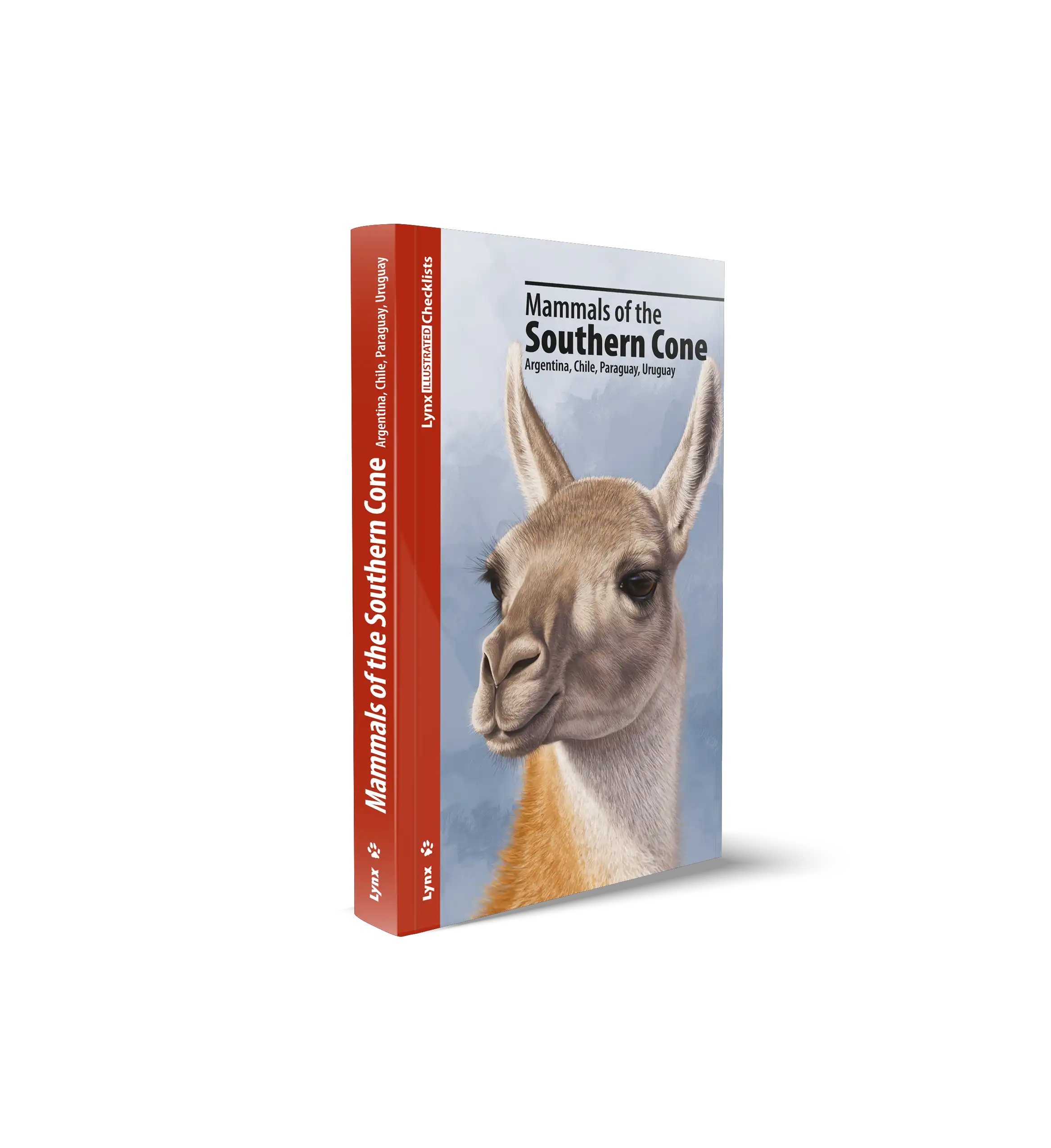
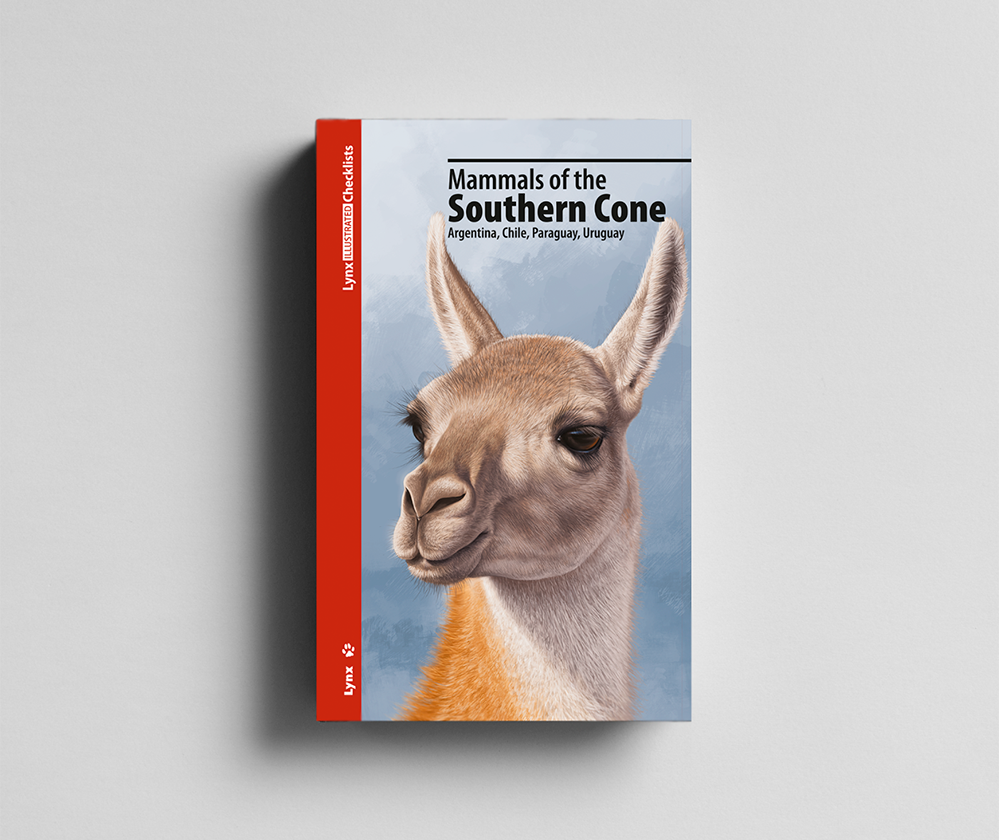
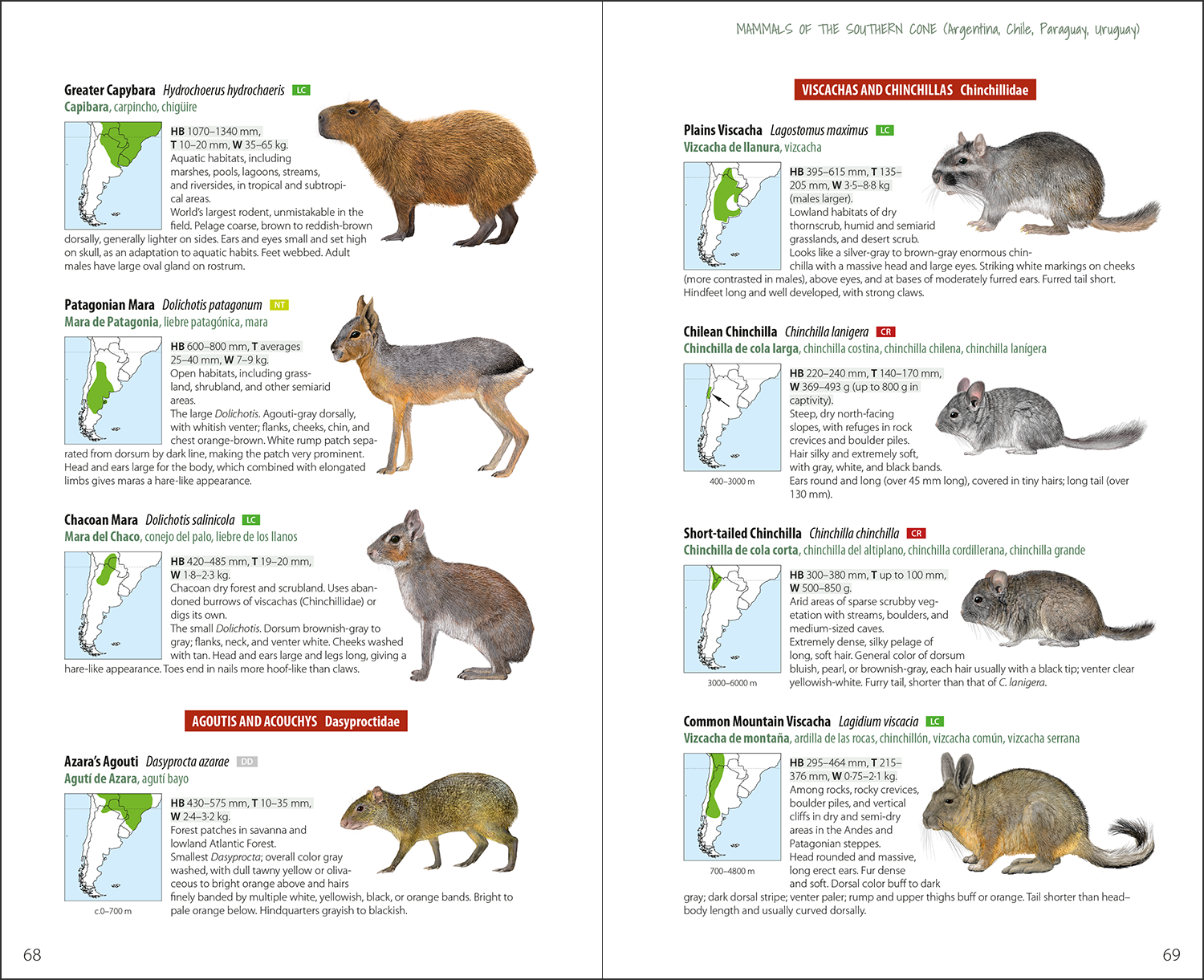
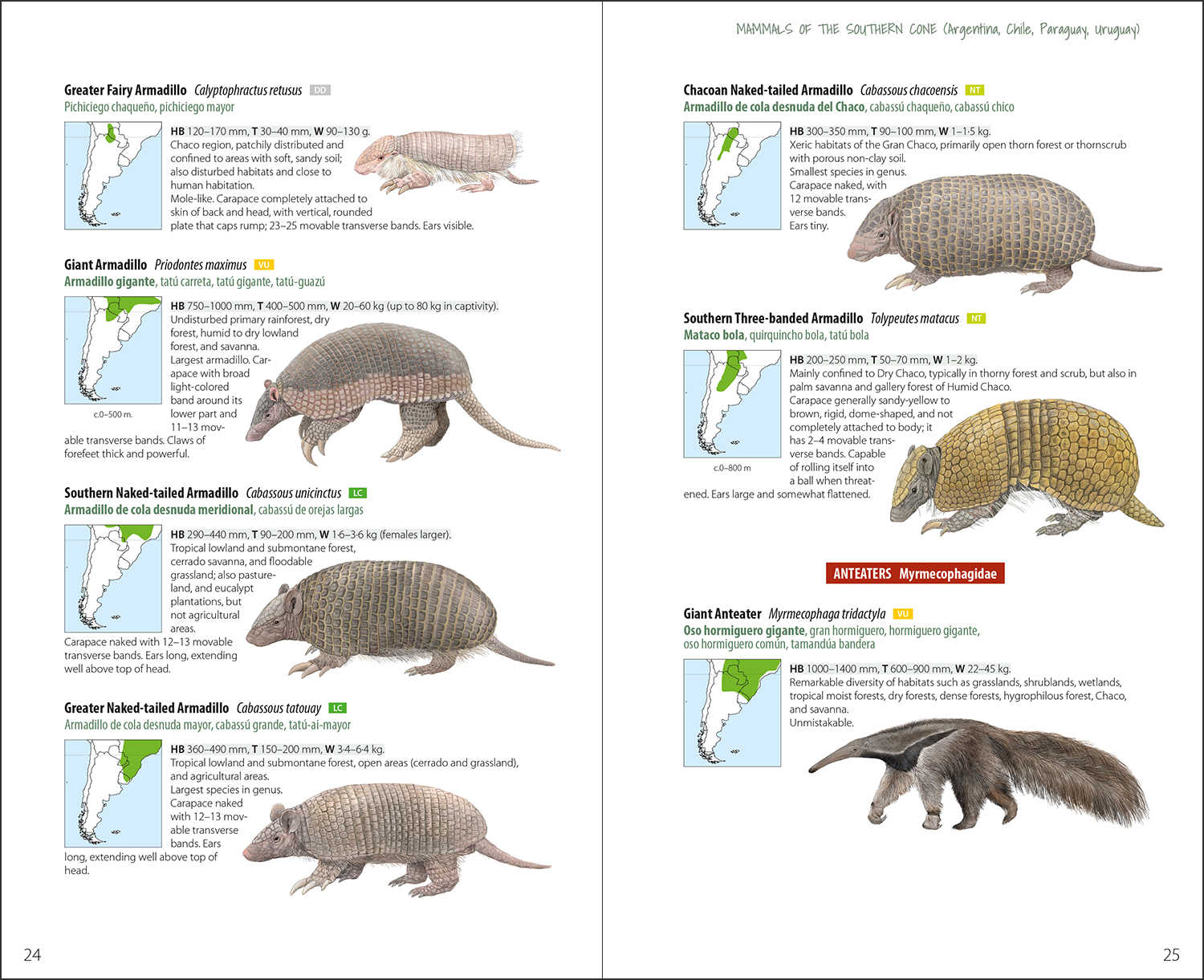
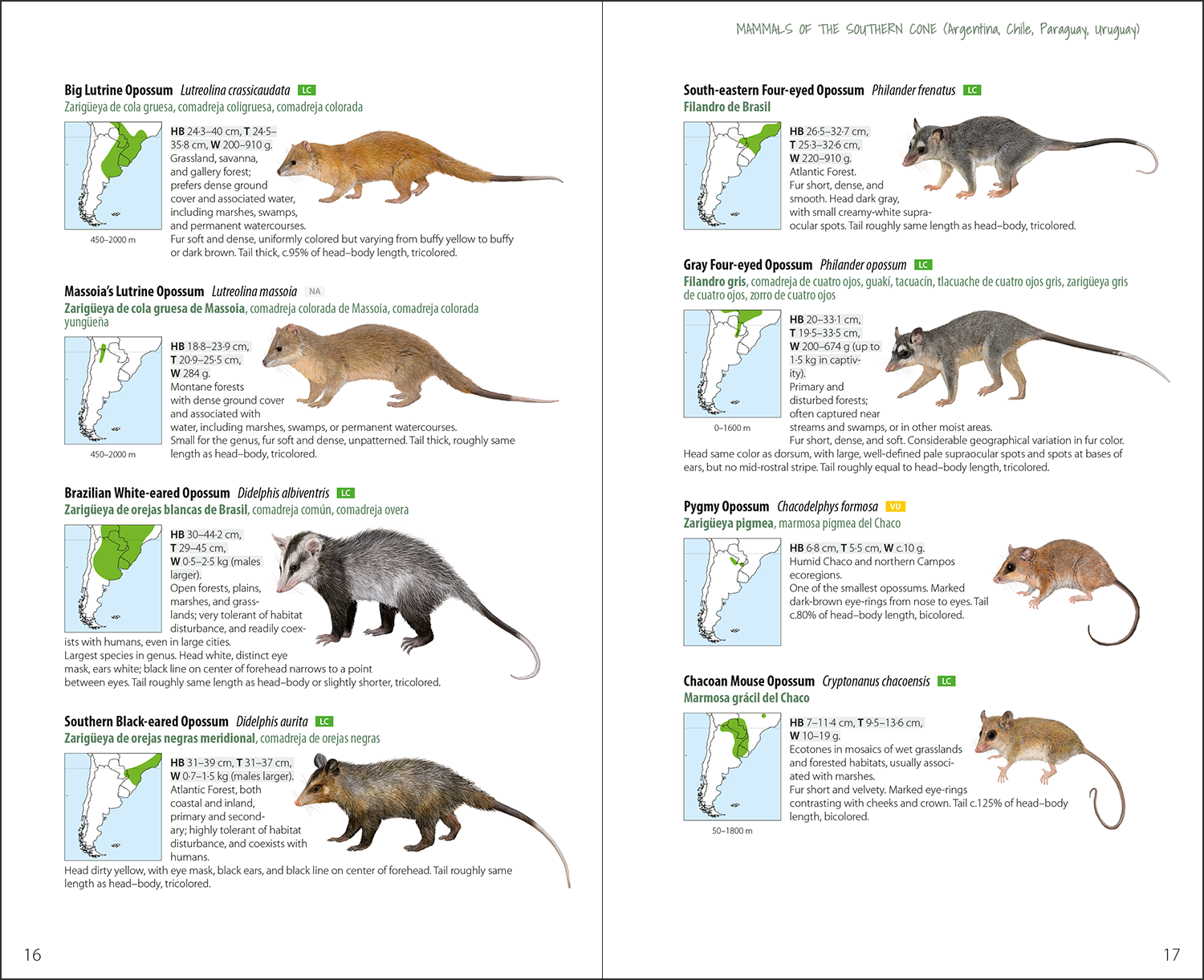
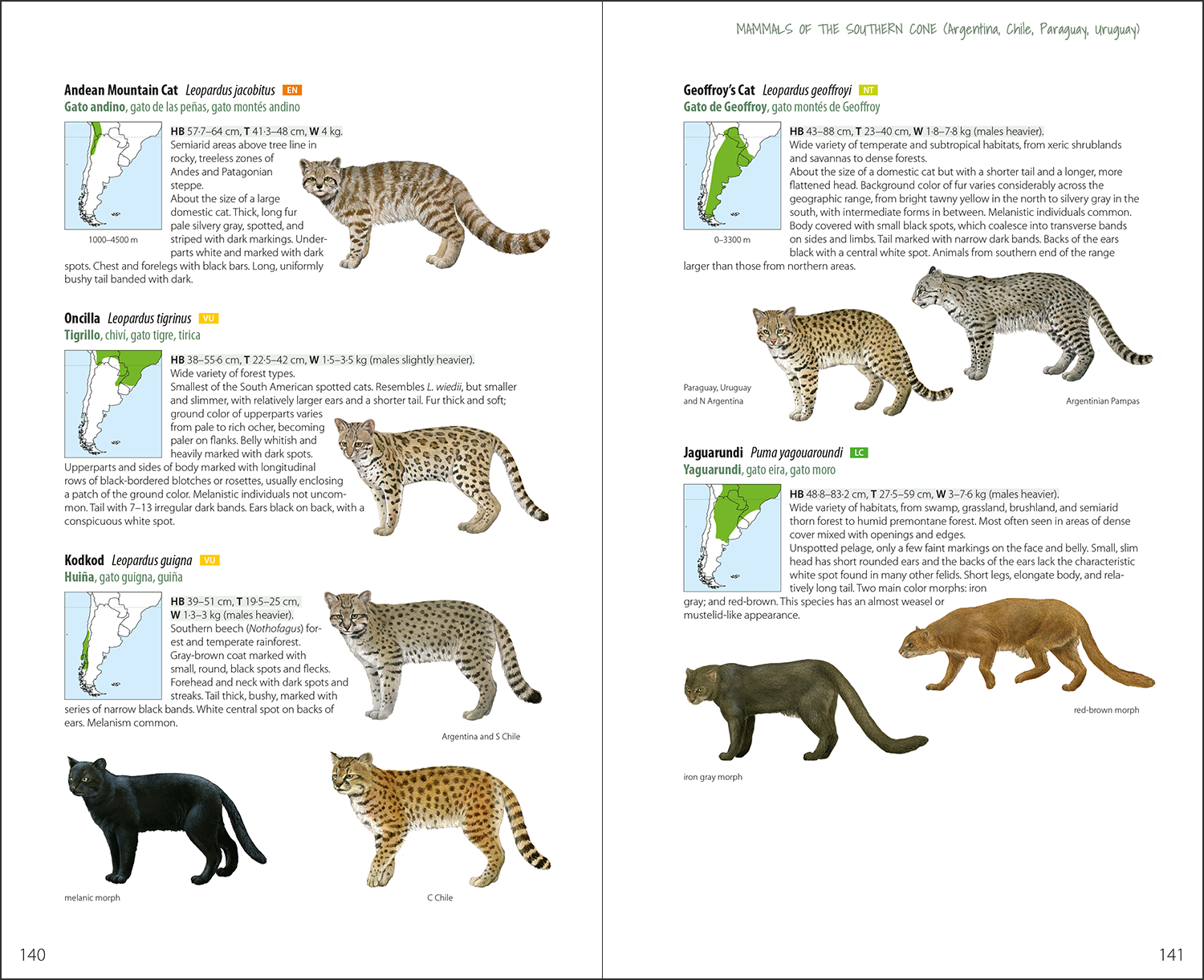
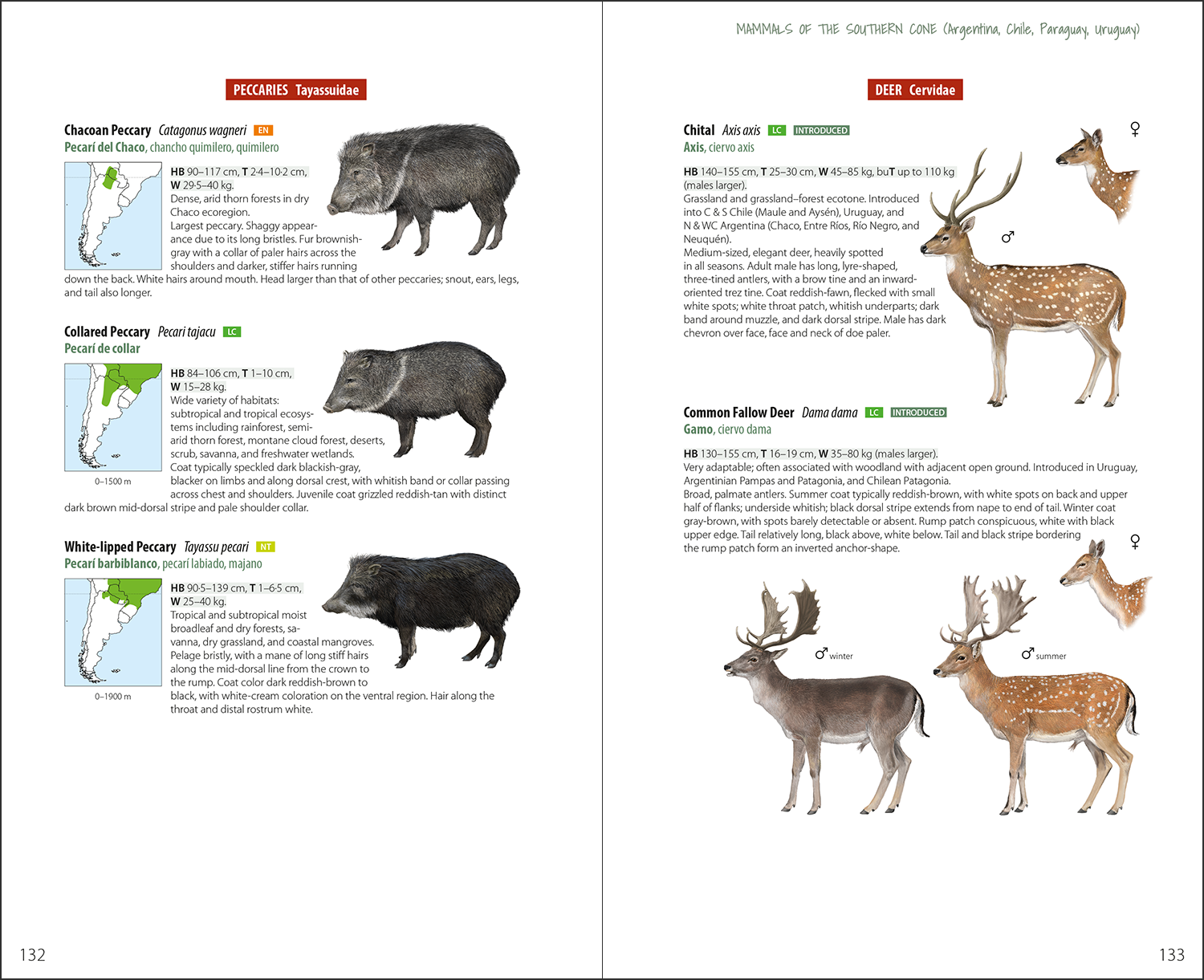
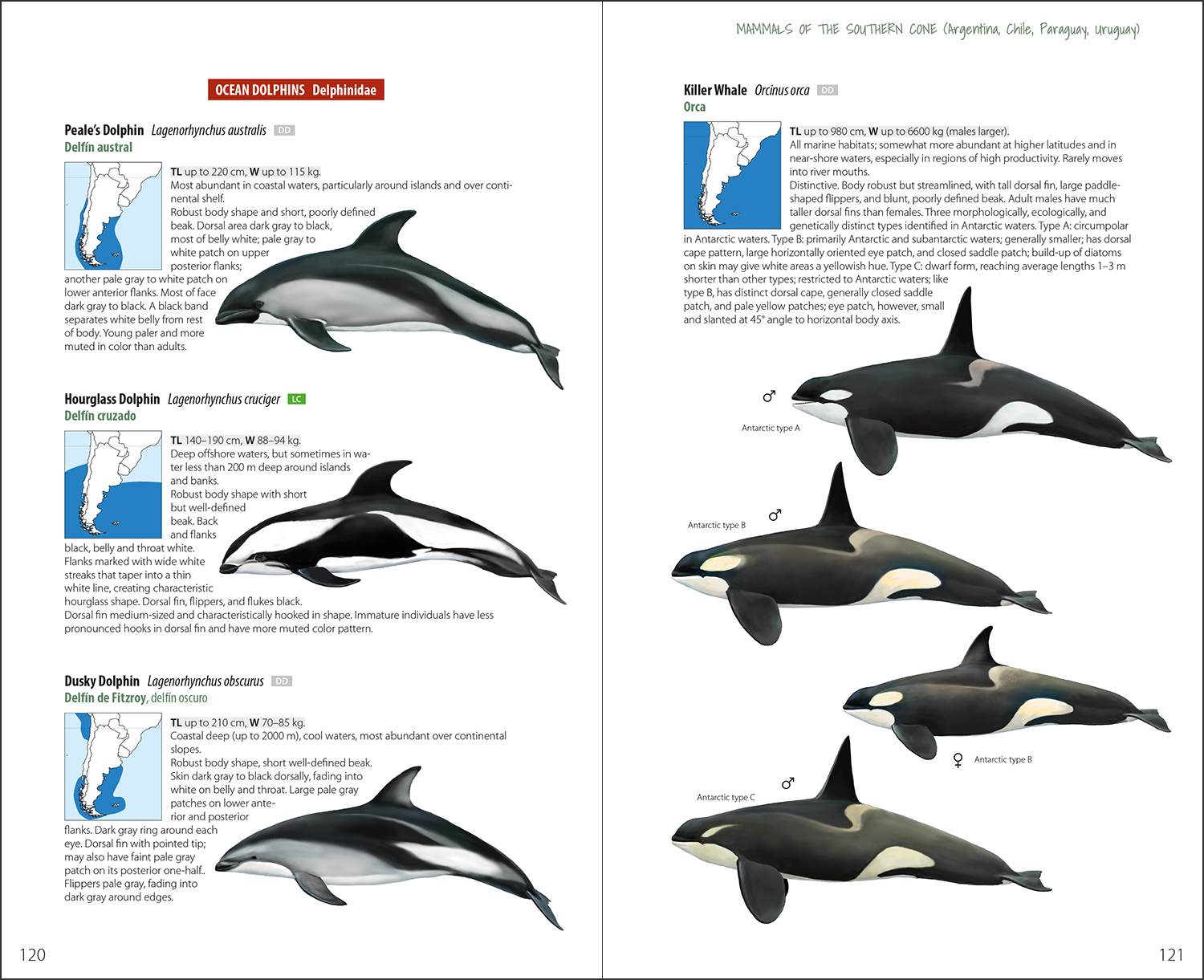
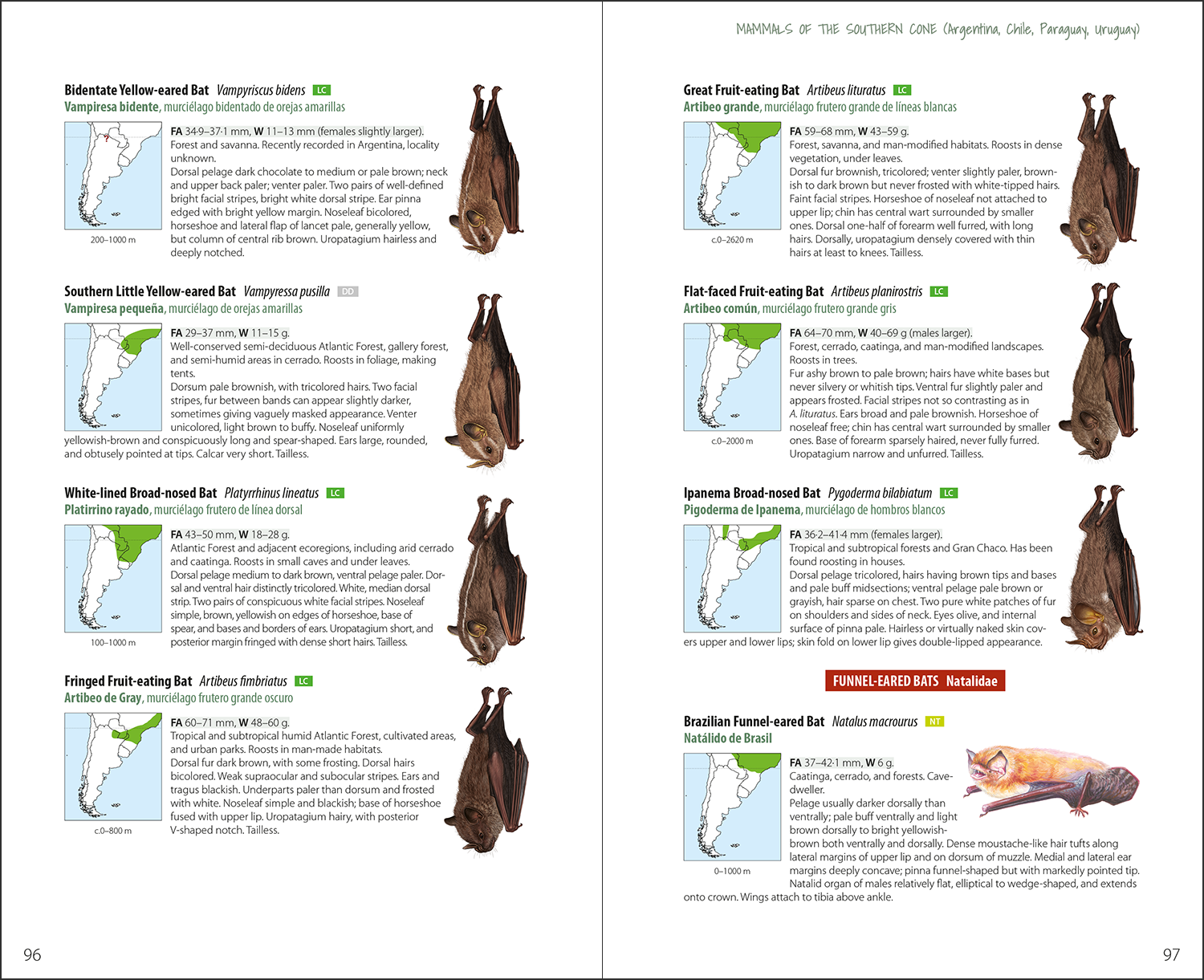
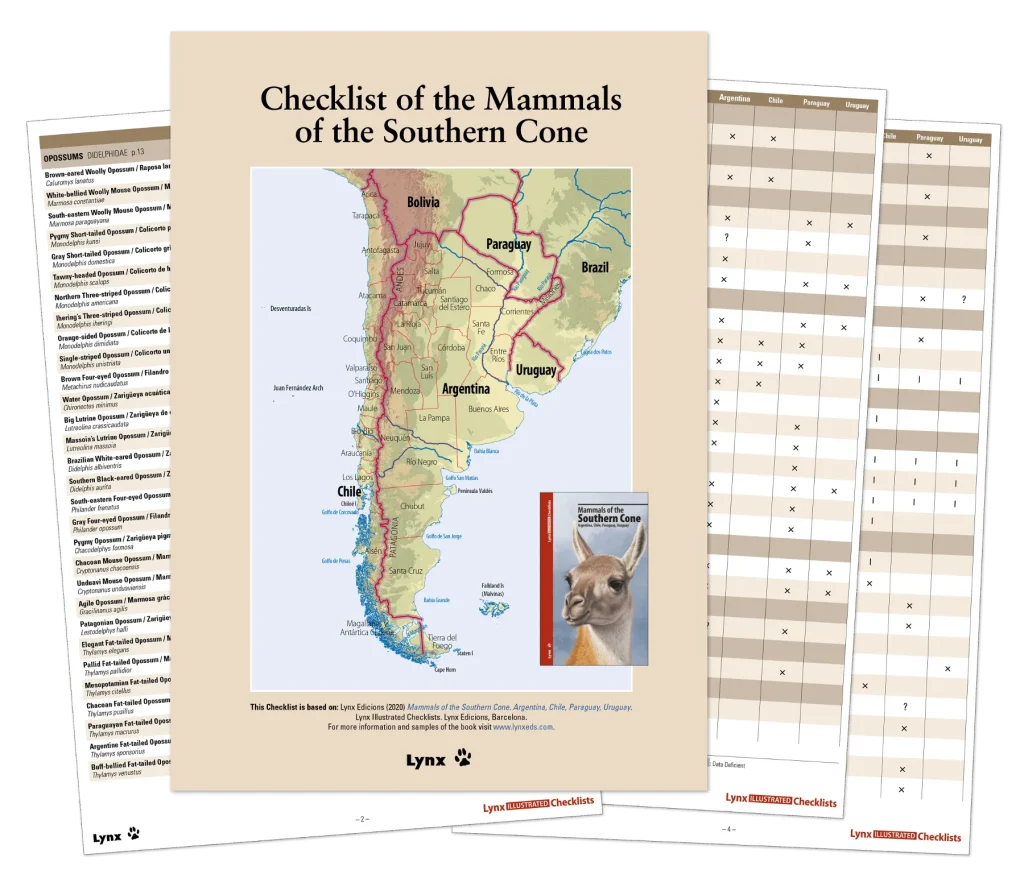
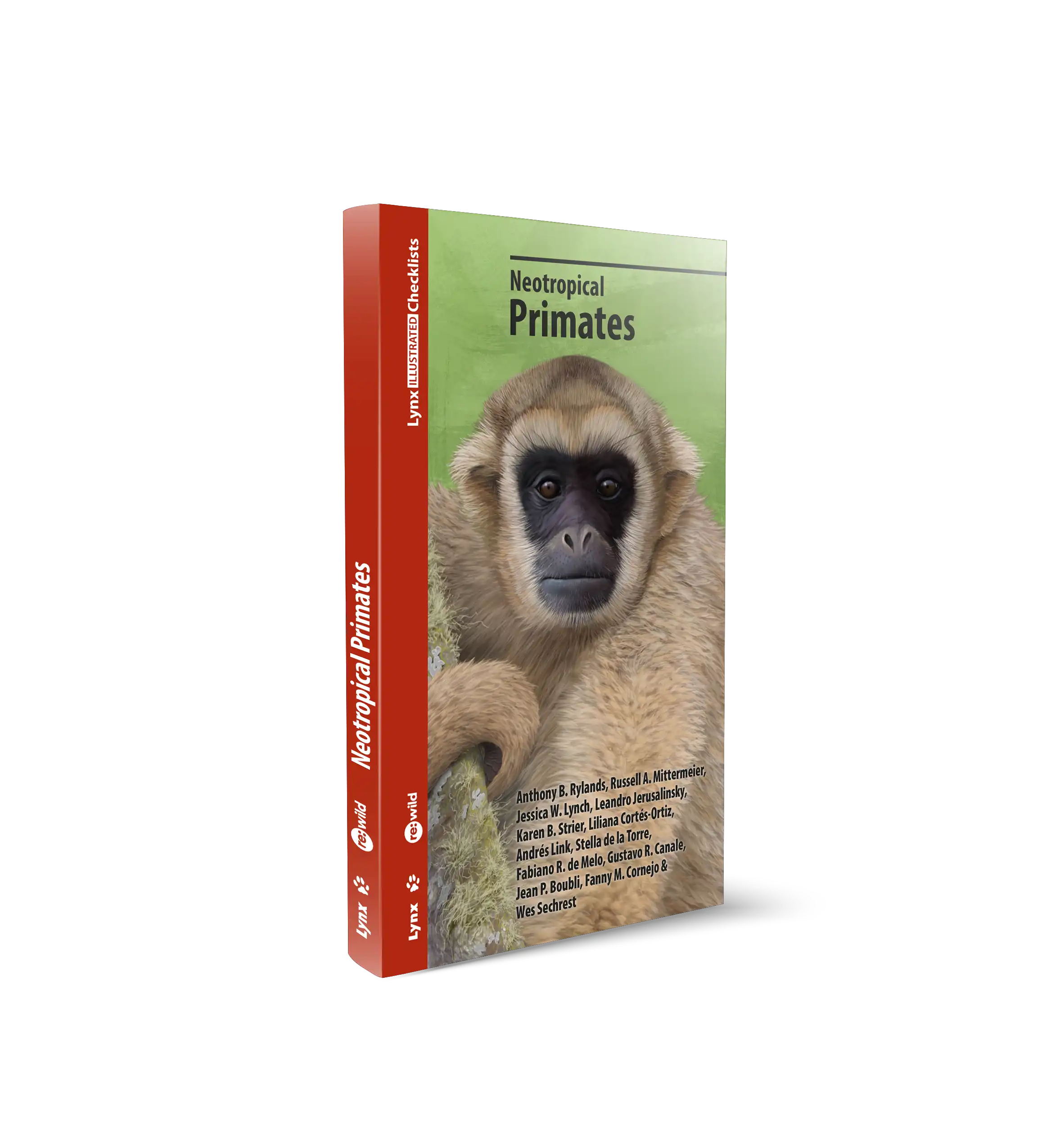
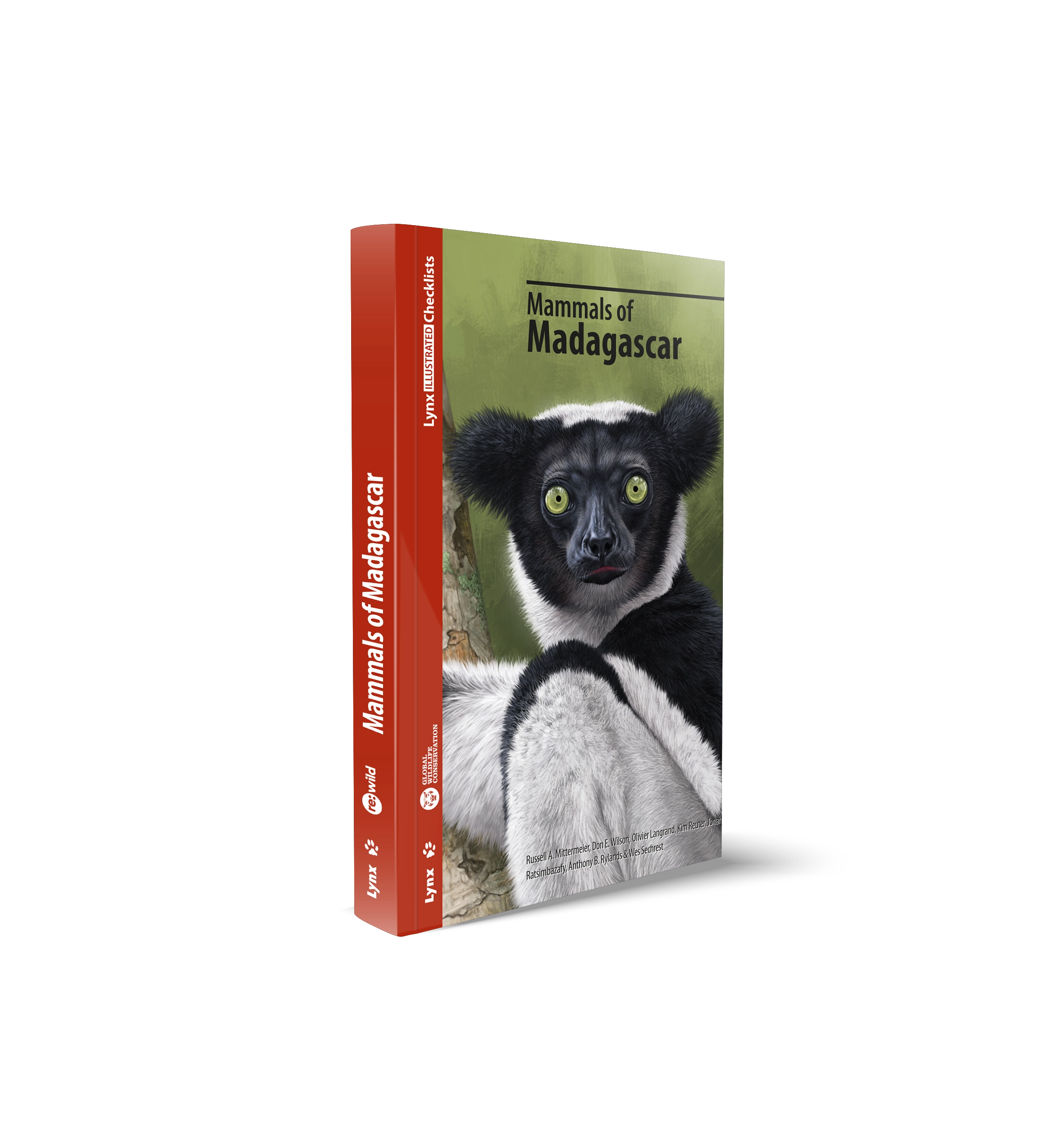
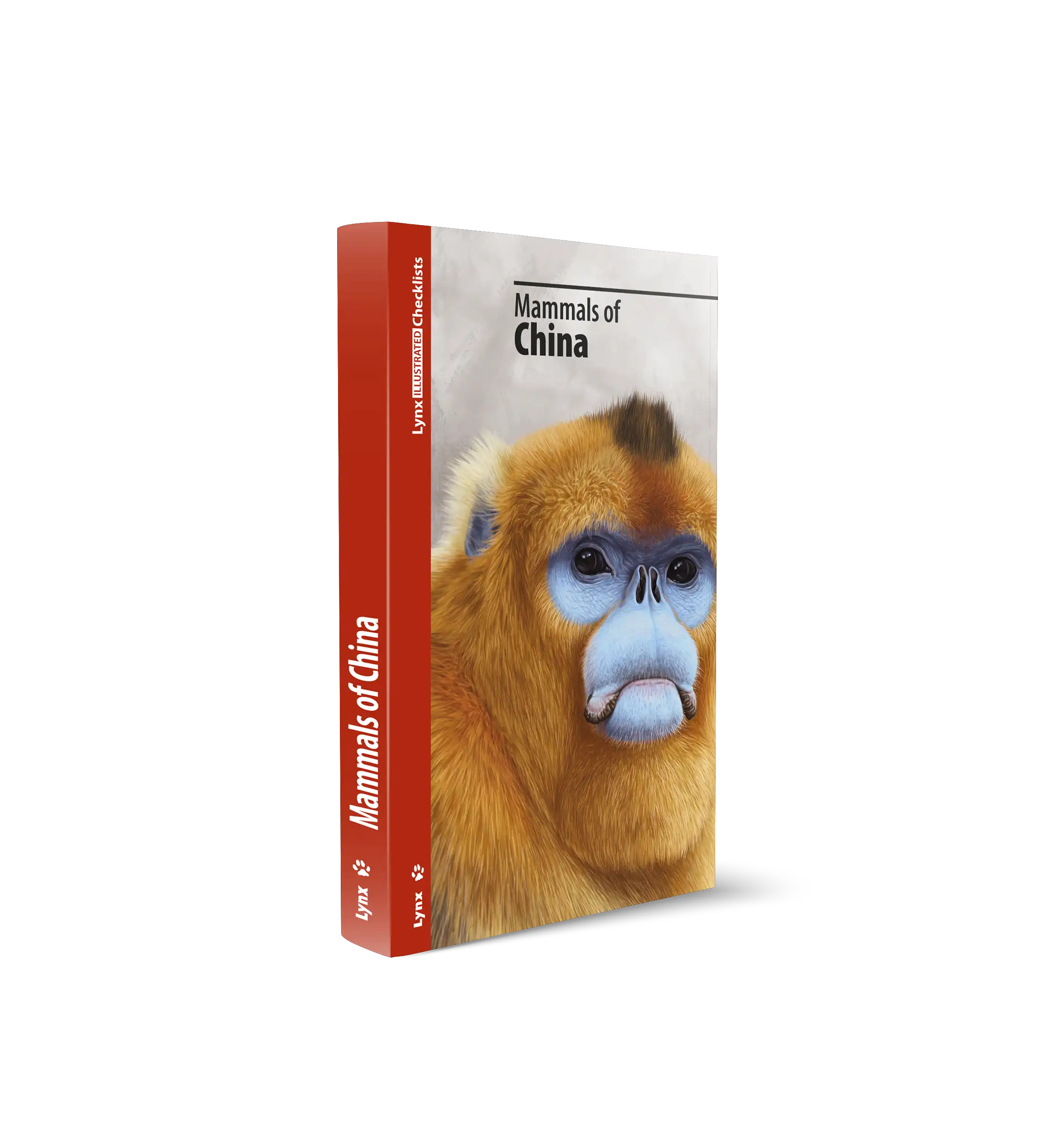
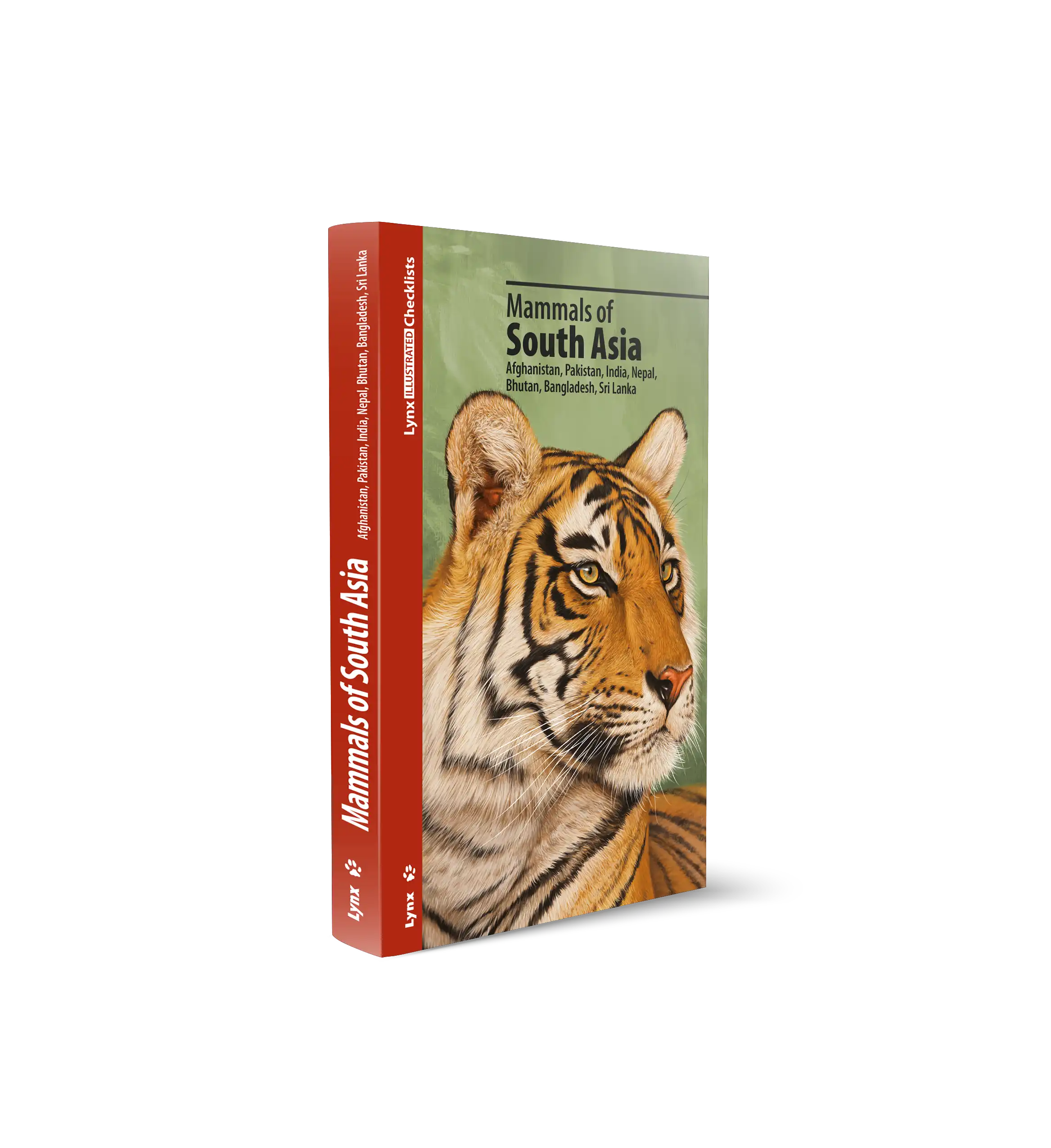
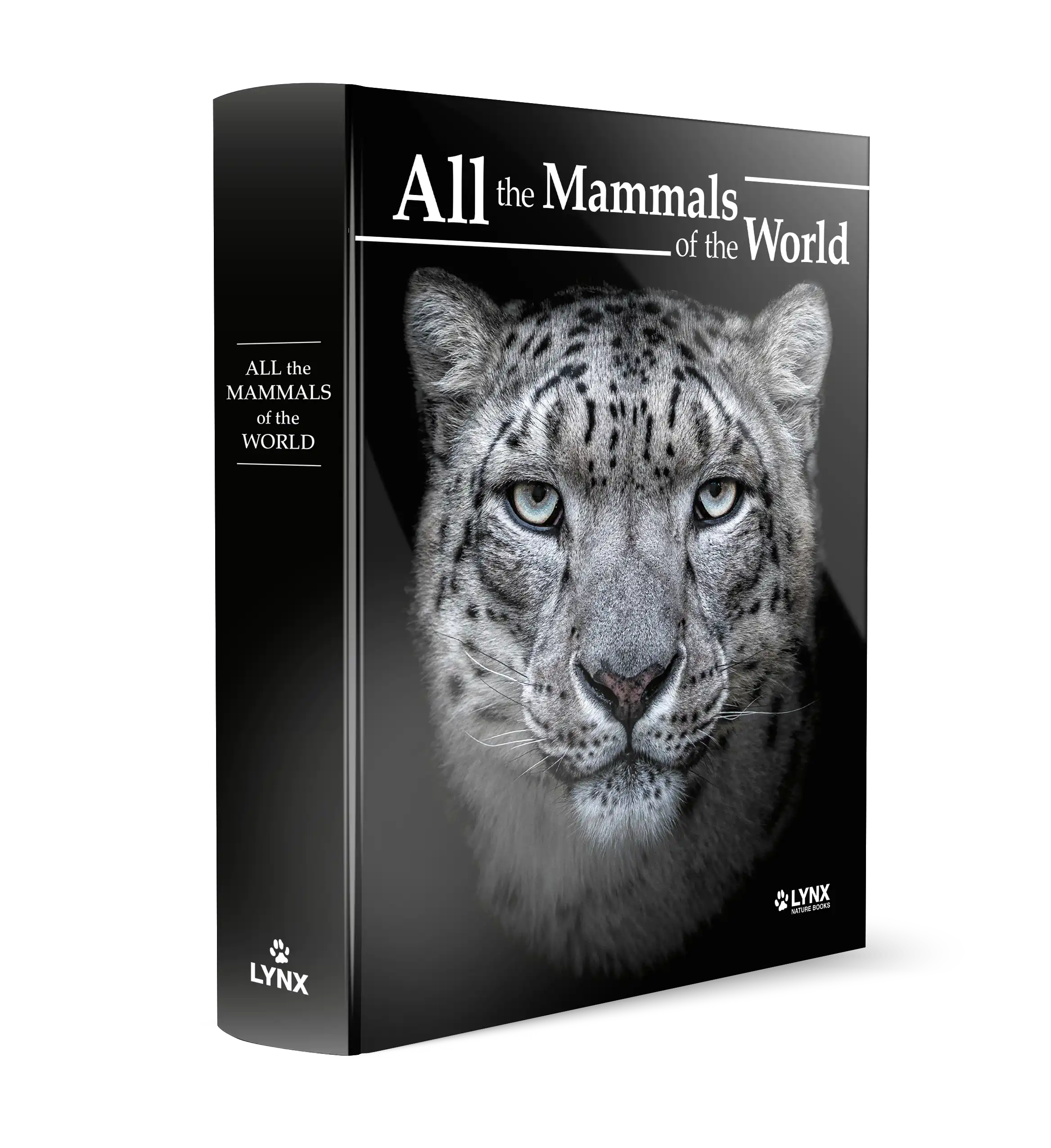

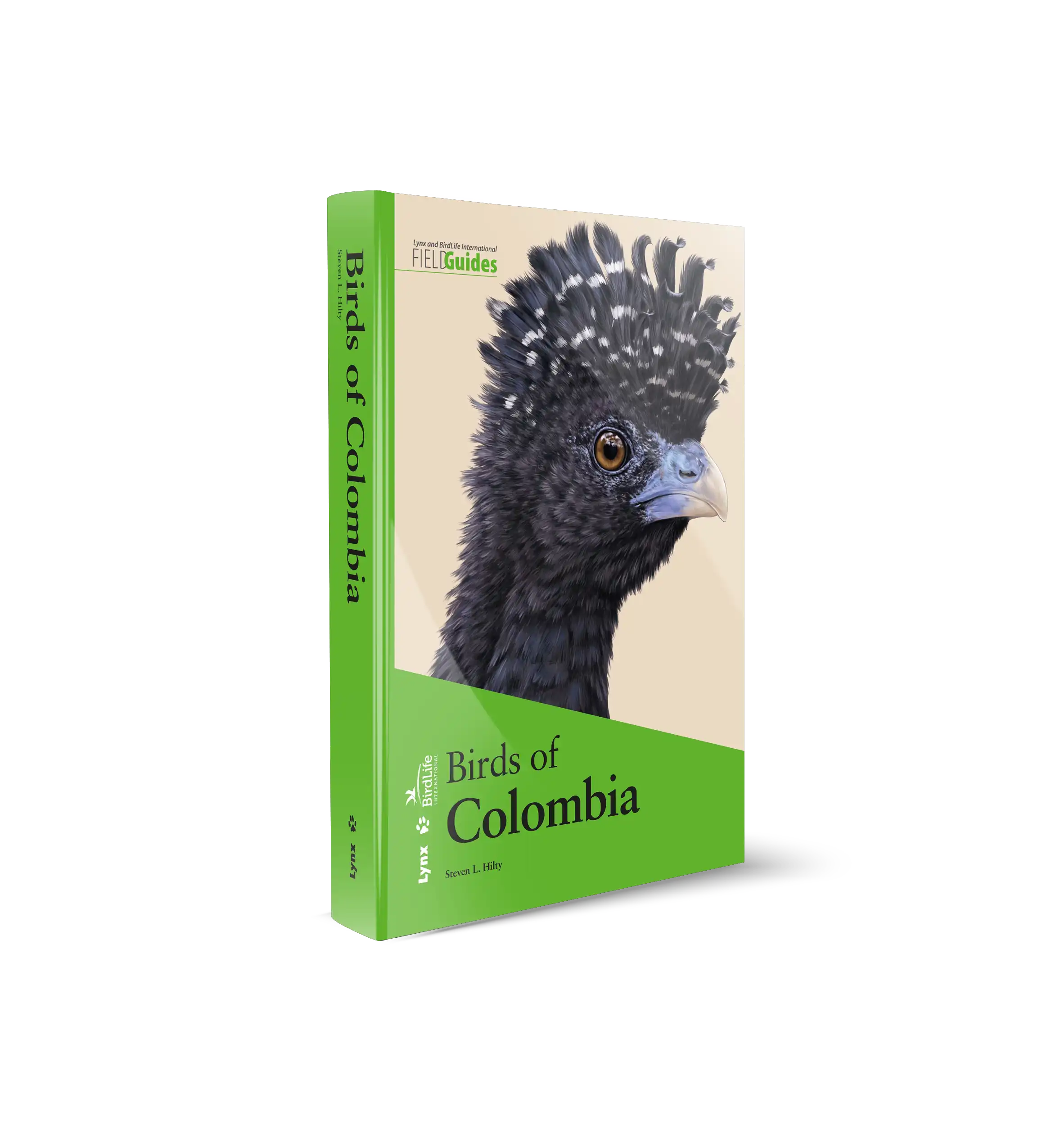
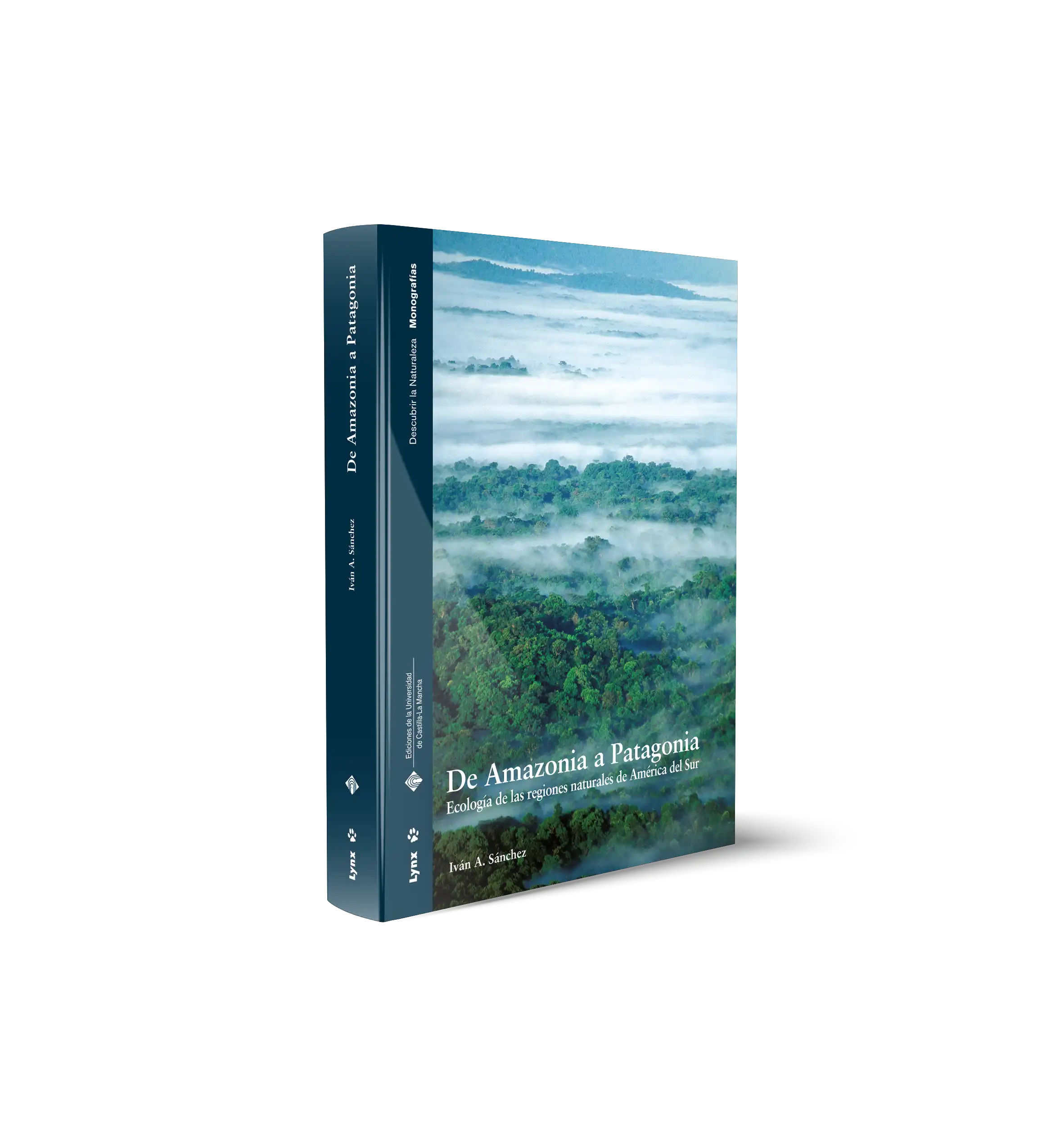

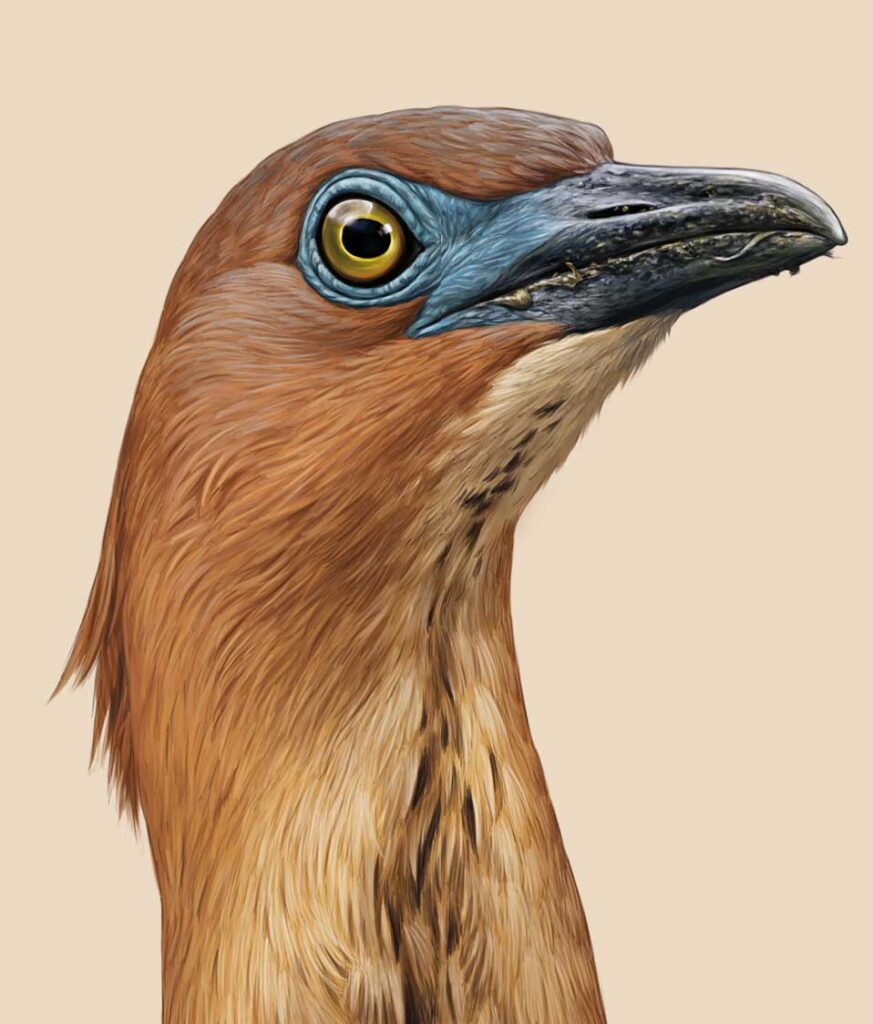
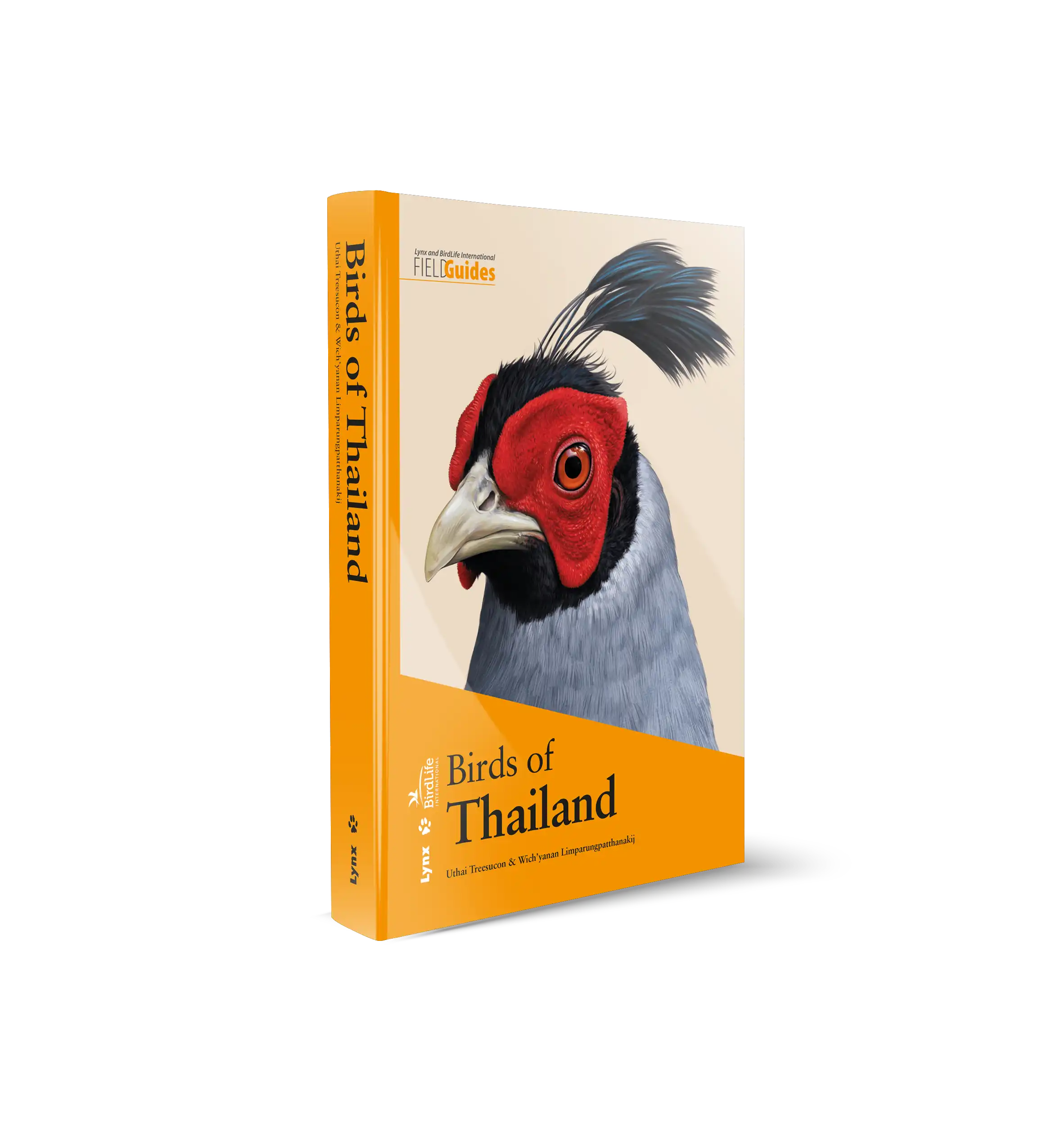
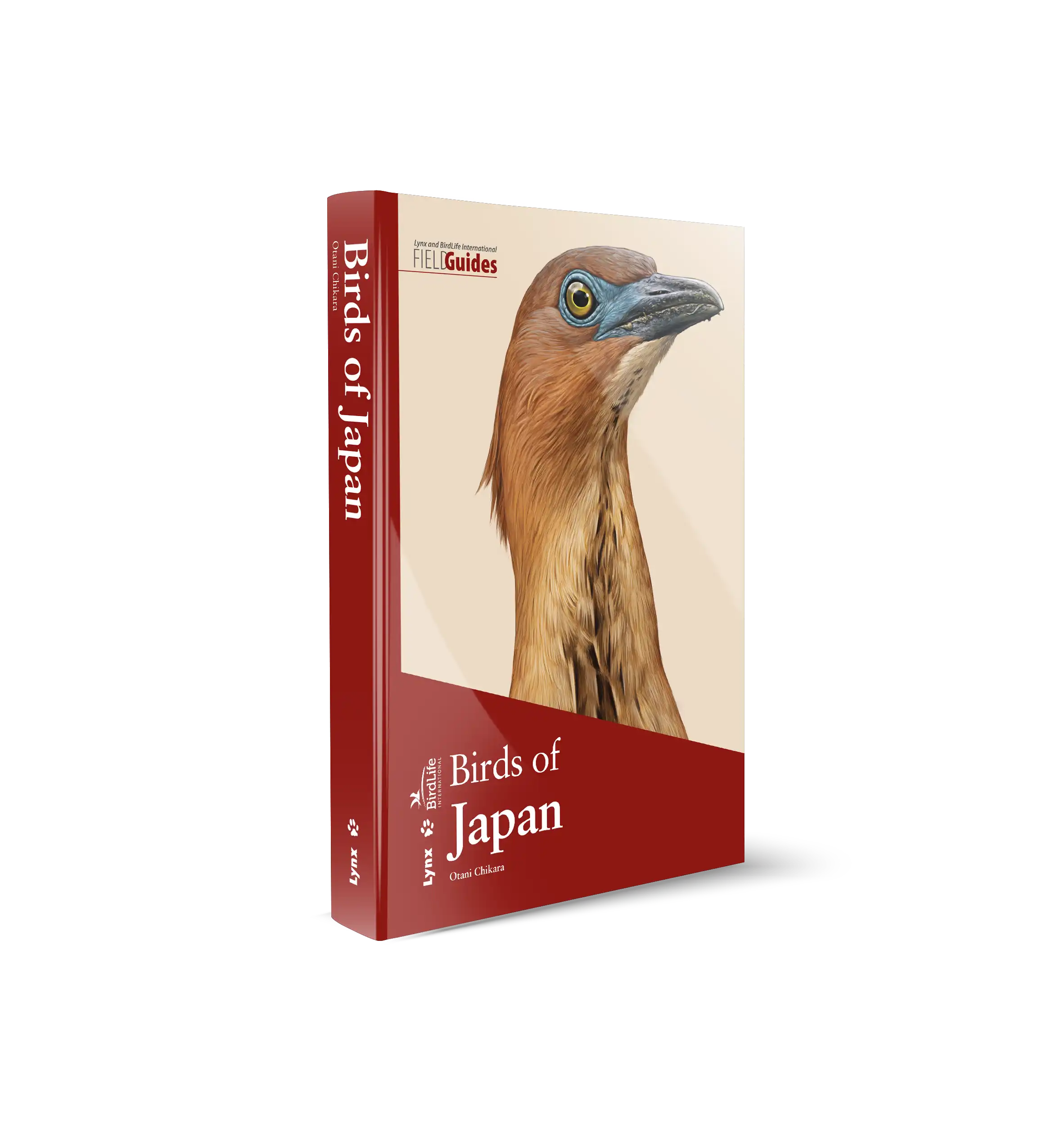








 Copyright 2025 © Lynx Nature Books
Copyright 2025 © Lynx Nature Books
Josep Sala Vilarasau –
A very good book. Very handly and useful. A must for every mammal lover and those to travel to that region.
Julien (propietario verificado) –
Livre interessant qui vaut le mérite d’être édité.
Je pense que 2 choses peuvent être améliorées ou modifiées :
1) c’est une checklist illustrée donc les dessins mériteraient à mon sens d’être plus grand ou en tout cas de prendre une place équivalente au texte voir plus.
2) La description physique des espèce me parait inutile (car le dessin amène déjà cette information). J’aimerais avoir d’autres informations à la place comme le régime alimentaire, dynamique de la population, site principal pour voir l’espèce…
Merci aux éditions Lynx tout de même. Je pense prendre les autres volumes 🙂
GRANGER Michel (propietario verificado) –
Très bonne initiative que cette approche de l’ensemble des mammifères d’une zone géographique ciblée, ouvrage synthétique très visuel et donc fort pratique (mais je ne le vois cependant pas comme un guide, comme c’est sous-entendu en 4e de couverture : « very handy for the field ».
Petit regret : j’aurais bien aimé trouver les noms français des espèces présentées.
Cordialement,
Michel Granger
Ad (propietario verificado) –
Great supplement for the Mammals of the World series
Gonzalo Fernández Hoyo (propietario verificado) –
Excellent spin-off from HMW, superb quality as in all Lynx books. A very welcome surprise are the NEW PRIMATE ILLUSTRATIONS (!) of far better quality than on the HMW Volume 3. Some suggestions for the forthcoming illustrated checklists of this series:
– Larger illustrations, there’s certainly room for that.
– Better grouping of the illustrations per page/family-genus. For instance, hares and rabbits (3 species) are laid out on two consecutive pages, not possible to see all of them at the same time.
– A better format, following the Lynx and Birdlife International FIELD Guides, with Flexicover option.
Bernd Rohrschneider (propietario verificado) –
This is an excellent book covering every known mammal species in that certain region.
For the forthcoming volumes I would wish additionally mentioned the German and French names (as in the Handbook of the mammals of the world) and at least a short description of the behavior in a few sentences or helpful keywords like nocturnal, arboreal,…
Gehan de Silva Wijeyeratne –
This slim volume marks the first in a new series of illustrated mammal checklists following the completion of the nine volume Handbook of Mammals of the World (HMW); an epic undertaking. This leaves Lynx Edicions in an enviable position amongst publishers by being in possession of illustrations of every extant mammal species in the world together with distribution maps and descriptive content available in a database. This means that they could very easily hive off the material into a series of country level or regional field guides. Does this mean that in the future they will be unbeatable competition for other publishers of mammal field guides? I suspect they will challenge the stablished order, but they will not be unbeatable as different authors and publishers will have their own approach to field guides, each offering something new and different. I recently submitted the text and photographs to John Beaufoy Publishing for ‘A Naturalist’s Guide to the Mammals of Sri Lanka’ which covers 95% of the species in Sri Lanka. I know from that experience that for many species, a single illustration is not enough and for species such as bats it is often necessary to have multiple images showing close ups of anatomical features. However, when you consider the illustrations of what is currently available for regions such as South America, there is no doubt that this publication with illustrations of a high standard and concise but focused text is a hugely welcome addition.
It is interesting they have cautiously labelled the volume as an ‘Illustrated Checklist’. I first visited South America as a student and back packed in Peru for six weeks. In the 1980s, even for birds a modern field guide was not available. The checklist has many of the features of what one would expect from a field guide. The concise text is identification focused with details of distribution, habitat, measurements and a distribution map. The typically single illustration of each species is next to the text which makes efficient use of the space although that is a departure from field guides which often have a facing plate of text. If it had been described as a field guide, it would have been hard to disagree as it ticks most of the boxes for what is expected from a field guide. Arguably, in terms of quality and content it surpasses some field guides I have seen. But billing it as an Illustrated Checklist is a safer description as a field guide should ideally have more illustrations and drawings to tease out identification features for some of the harder species.
There is no author citation in the publication as it is a derivative from the nine volume HMW. However, there is a preface by Don E. Wilson, Chief Editor of HMW and one of the most prolific writers on mammals of recent decades. There are two pages of introduction including a map which shows the countries covered, and were it not for the partial exclusion of Brazil, its coverage would have been effectively all of Southern South America. There is a half of page of text introducing the species account and then you are into the species accounts (pages 13 – 152) followed by just over a page of key references and finally the index.
The arrangement of families, species and genera has been updated from the HMW for a forthcoming publication; an Illustrated Checklist of the Mammals of the World. The updated arrangement has been used in this volume to the 56 families covered. Many of the land mammal families are confined to the New World. As with HMW, the taxonomic arrangement is based on molecular phylogenetics which attempt to discern the evolutionary relationships. There is more than one way to translate evolutionary arrangement into a linear arrangement in a book such as this. But whatever the exact approach taken, it sheds more light on the relationships between families. Thus, because Cetaceans (whales and dolphins) evolved from a land mammal, in this volume the Cetaceans are arranged between bats and camels; (note, hippopotamuses which are absent in South America are the closest living relatives). The eared seals and earless seals which are obligate marine mammals, follow the bears as they are all part of the Order Carnivora.
The region has some spectacular land mammals which are popular with wildlife tourists. A few of them include for example the Giant Anteater, Three-toed Sloth, various primates, Greater Capybara, Jaguar and the Giant Otter. Unfortunately, perhaps ninety percent or more of the land mammals will be small or nocturnal or both. It is generally true of most countries that the majority of mammals are small or nocturnal or both. I am only too familiar with this having lived most of my life on two Islands; Britain and Sri Lanka at temperate and tropical latitudes respectively. Some of the most interesting mammals in South America include the New World marsupials. But most of these species are unlikely to be seen by casual visitors. The family Cricetidae (voles, lemmings and New World rats and mice) contribute 131 species and the bats in several families contribute 74 species. Even very keen mammal watchers will not see many of the mammals as they will require small mammal trapping under research permits. Nevertheless, this is a wonderful book to thumb though and see at a glance the mammal fauna of this part of the world spanning opossums, armadillos, howler monkeys, New World porcupines, pacas, right whale, and Kodkod (a small cat found in Southern beech forests).
The clever use of space means that 486 species are covered in a very slim book which is lightweight. This makes it suitable to be packed in for a visit even if the prime focus of a visit is a birding tour. Its portability and affordability will hopefully ignite a further interest in the study of mammals by naturalists resident in the region who previously have not had a resource of this quality and authority. I suspect there will be a market for the publisher to use this format and page size for an illustrated checklist for the birds of South America as well.